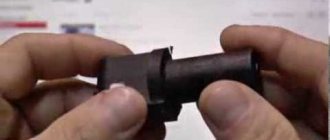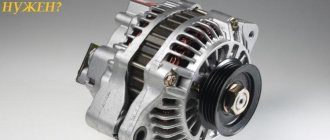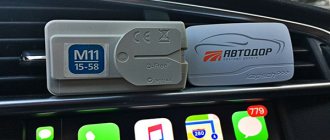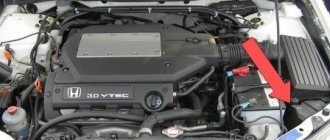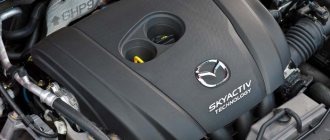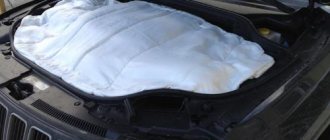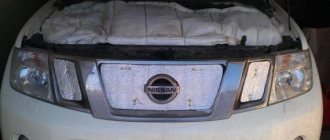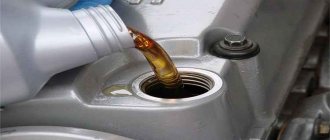An engine oil cooler (oil cooler, oil cooler) is a solution that allows you to effectively cool the working fluid of the internal combustion engine lubrication system. At the same time, this device can not be found on all cars, especially not as standard.
When developing a particular power unit, designers initially calculate the possible heating of the oil. It turns out that if the car is operated under normal conditions, and the engine itself is not boosted, then the engine oil temperature is usually within acceptable limits.
However, the situation changes when, for example, the engine is tuned (replacing the camshaft with a sports one, etc.), a turbine was installed on the naturally aspirated engine, the unit is often or constantly spun to the limit, the cutoff speed has shifted, etc.
In this case, the temperature of the lubricant increases significantly and many drivers install an oil cooler kit in order to achieve better cooling of the engine oil. Let's look at the operating principle of this device and its design in more detail.
Engine oil cooler: what is it for?
First of all, a significant increase in engine load means that in some cases there is a need to additionally cool the engine oil. The oil often overheats precisely when the engine spins up to maximum speed and operates in this mode for a long time.
Also, an aggressive driving style (frequently spinning the engine to the cut-off point) can lead to oil overheating. In this case, the lubricant simply does not have enough time to cool after lowering the speed.
If the engine is forced, in this case the oil temperature deserves increased attention. It is not difficult to guess that the tuned engine was not originally designed for such loads. Naturally, the level of heat release also increases, while the heat sink remains standard.
Please note that the above information does not mean that any engine will overheat after boosting or operating at maximum loads. The fact is that some engines are predisposed to overheating of the oil and the internal combustion engine itself, while others are not. In this case, at least additional control of the oil temperature will not be superfluous.
To do this, you can initially install a temperature and oil pressure sensor in the engine. As you know, many cars are not equipped with such sensors as standard. All the driver can count on is the oil pressure warning light on the instrument panel coming on when the oil pressure drops significantly.
At the same time, it is not necessary to chase expensive high-precision devices such as Defi, etc. To monitor the overall picture of what is happening in the oil system of the internal combustion engine, a cheap or medium option is quite suitable. We also add that experts recommend installing not only a temperature sensor, but also an oil pressure sensor.
The reason is that after heating, the oil dilutes, which naturally leads to a drop in pressure in the system. In this case, the standard emergency light may not light up, since it usually lights up at critical values.
However, do not forget that even if the oil pressure light is not on, at low pressure the engine wear is colossal. It turns out that thanks to the presence of a separate sensor, it becomes possible to detect the problem in time and stop the engine in a timely manner.
Let us add that the permissible oil temperature is normally heated to + 100 degrees Celsius. Moreover, for some engines, even heating up to 110 degrees is already high and may not pass without consequences, while others can easily survive even 140-150. However, in most cases, the consequences of severe overheating of the engine oil are quite serious.
First, the oil itself dilutes, that is, its protective and lubricating properties are lost. In this case, the engine is subject to severe wear. Also, liquid oil is heavily consumed by waste, and overheated lubricant simply burns and cokes the engine.
Moreover, after overheating, the oil should be changed immediately, since further operation of the internal combustion engine with such a lubricant significantly increases engine wear, leads to sticking of the rings, the appearance of oil smoke from the exhaust pipe and rapid overhaul.
Working fluid heating system.
In the case of using a press brake without CNC (budget option), the ambient temperature at which the press can operate normally is allowed down to -5o C. But in this case, it is necessary to ensure the toC of the working fluid (hydraulic oil) is not lower than +10oC, otherwise it will work blocking based on the temperature of the working fluid (the sheet-bending equipment will not turn on). The power of electric heating elements installed on equipment ranges from 2 kW and above (depending on the volume of working fluid).
Engine oil cooler kit: how to select and install
Having dealt with the oil temperature, let's return to the oil cooler itself. It is quite obvious that if, after installing the sensors, overheating of the lubricant was noticed, then such a motor urgently needs an engine oil cooler.
It is important to understand that installing an oil cooler without installing an oil pressure and temperature sensor is not recommended. The fact is that if a particular engine still does not need additional cooling, the oil after installing the radiator will always remain too cold, and this is bad for the engine.
Let us immediately note that there are two types of coolers: air and liquid. We will not consider the second type, since its installation is more complicated, and the advisability of use in some cases on tuned cars is called into question.
So, if the driver has decided that an oil cooler is needed, then he needs to purchase the following items:
- a special spacer for the standard oil filter. Sensors are mounted into this spacer, and two hoses are also connected, through which the oil enters the radiator for cooling and exits the oil cooler back into the lubrication system.
- oil cooler. This element is a radiator and is installed in the engine compartment so that as the vehicle moves, it is possible to achieve high-quality airflow with oncoming air flows.
Let us also add that it is better to select the radiator installation location so that the hoses from the spacer under the oil filter to the oil cooler itself are as short in length as possible.
We also recommend reading the article about which is better, a mechanical compressor or a turbine. In this article, you will learn about the advantages and disadvantages of a particular solution for supplying air to pressurized cylinders.
As a rule, car enthusiasts prefer to immediately buy a ready-made branded kit to solve the problem most effectively. The only downside is that really high-quality products from well-known brands are quite expensive.
If you assemble the kit yourself, you can save about 25-30%. It is important to take into account some features. First of all, oil filter spacers come with or without a thermostat. The presence of a thermostat is explained by the fact that if the oil temperature is low, then the lubricant is simply not supplied to the radiator for cooling.
This function is very useful in winter, allowing the lubricant to warm up faster after a cold start and reach operating temperatures. In the case where the spacer does not have a thermostat, it is recommended to simply remove it for the winter, that is, in fact, the oil cooling system is temporarily “suppressed”.
Now let's move on to the oil cooler. You need to understand that the efficiency of oil cooling will directly depend on its size and the number of row sections. For each engine, the owner selects a radiator individually, taking into account the required cooling intensity.
It is better to purchase a product from trusted brands, without being inclined to buy the cheapest option. Budget oil coolers often cause a significant decrease in pressure in the lubrication system. However, the most expensive solutions may also be of no use, so stick to the “golden mean” rule.
If we talk about fittings, hoses from the spacer to the radiator, various adapters, etc., there is no way to skimp on such parts. In this case, it is strongly recommended to buy only original expensive products from well-known brands, which will allow you to avoid a number of serious problems in the future.
Working fluid cooling systems.
If your equipment is located in a warm room and its operation is quite intense, then a prerequisite for the reliable operation of your equipment is cooling of the working fluid.
We offer a choice of three cooling system options:
1) Cooling of the working fluid using running water in a water heat exchanger .
Due to their design, water-cooled oil heat exchangers provide the best heat transfer ratio with a low pressure drop. For all types of heat exchangers, tables and graphs of the dependence of losses on fluid flow are provided. The diagrams indicate the amount of energy that each heat exchanger can remove. The tables also show overall and connection dimensions for all types of heat exchangers and their main technical data. Recommendations for the use of heat exchangers in various operating conditions are also given. MS 84 P This type of heat exchanger is widely used due to the following features: • Compatibility with all possible water circulation and water treatment systems, the ability to control water circulation. • 4-circuit water circulation, which allows increasing heat removal without increasing the flow of cooling water or optimizing maximum heat transfer with minimal cooling water consumption. • The special configuration of the connection of the heat exchanger pipes ensures good heat transfer. The heat transfer surface ranges from 0.2 to 3.6 m2. In order to avoid corrosion damage to heat exchangers and salt deposits in the channels, we recommend pre-preparing the water or using a water circulation system
2) If it is necessary to cool the hydraulic fluid, but there is no possibility of drainage, it is necessary to install an air heat exchanger
Air-oil heat exchangers are designed to cool hydraulic oil circulating in the hydraulic system. They are usually installed on the drain hydraulic line. Air-oil heat exchangers of the MG AIR 2015K series consist of a radiator, inside of which cooled hydraulic oil circulates, a fan that creates air flow through the radiator, a protective casing and a thermostat to maintain the temperature in the set range. Hydraulic oil is cooled by heat exchange with the circulating air flow and heat radiation from the outer walls
Oil seals
Internal temperatures (400°C and above) and the constantly changing air gap make the seal difficult to operate. This even applies to piston sealing rings, which only guarantee tightness when the oil closes the smallest pores and free spaces - then the number of blows into the engine crankcase will be minimal. The oil also keeps all simmers and labyrinth seals operating. It also reduces friction between the shaft and the boiling edge, which without oil, especially at high speeds, would quickly break down.
The oil film that forms between all moving elements suppresses metallic sounds and absorbs forces that accompany sudden movements of interacting parts. This ensures quieter operation and reduces engine vibration.
The interaction of parts in the engine leads to their wear, resulting in metal particles appearing in the oil. The engine oil collects it and transports it to the filter. There they are separated from the oil, for example, deposited on a paper filter cartridge.
Another task of the oil is to capture and neutralize gases and aggressive substances that enter the crankcase through the piston rings along with the purges. We get rid of them when we change the oil. Thus, the oil lubricates the engine, cools, cleans, seals and protects parts from corrosion, both aluminum and steel. Yes, yes a lot!
Why does oil get into the engine coolant?
After detecting the first signs of a leak, it is necessary to determine the problem that led the relevant vehicle devices to this condition. The presence of oil in the cooling system of a car engine is affected by the following reasons:
- there is mechanical damage in the radiator or oil cooler;
- The cylinder block or oil cooler gasket is worn and has lost its elasticity or is cracked.
The cooling system and oil radiator are completely sealed, but their constituent elements (hoses, pipes) are in contact with each other. In areas of friction between hoses and system gaskets, cracks may occur, as a result of which the engine fluid immediately enters the vehicle’s cooling system or vice versa.
A separate reason for oil getting into the antifreeze is the use of coolant that is not appropriate for a particular vehicle. There is no need to add any antifreeze to the required level. Different refrigerant manufacturers use a variety of additives that are necessary to maintain a protective oxide layer on the cylinder liner.
Using refrigerants with different additives can damage the cooling elements. An insufficient amount of additives in the refrigerant used will lead to accelerated chemical reactions and deformation of the system, and an excessive amount increases the likelihood of premature corrosion of the system surface.
What you should know about malfunctions
The oil radiator is operated under rather harsh conditions, but the pressure inside the device is not very high, which a positive effect on the service life. As a rule, car enthusiasts are faced with the need to replace radiators every 3-5 years, although in some cases replacement may be required earlier. It is worth paying attention to the following things:
- Increase in oil temperature;
- The appearance of dark deposits on the walls of the expansion tank of the cooling system;
- Presence of oil leaks.
Let us immediately note one important point: the circulation of coolant and the circulation of oil in their respective systems are interconnected . If the circuits become leaky, one fluid can mix with another, which will have a detrimental effect on the engine. For example, oil may get into the expansion tank. It is strictly forbidden to operate a car with such a malfunction - a seemingly insignificant breakdown in the long term will certainly lead to engine malfunction.
It is recommended to carry out a visual inspection of the oil cooling radiator once a year, or even more often. Oil leaks, dark deposits and greasy spots will indicate that the radiator is depressurized. More often you can observe a violation of the integrity of the oil supply and drainage pipes. Oil may leak around the fitting . These elements of the oil system should be checked first. A less common problem is a violation of the integrity of the radiator itself. Although the radiator is made of metal, its tubes have low mechanical strength - gravel from the road can pierce one of the tubes.
general information
When fuel burns in the engine cylinders, the operating temperature can rise to 2000°C. Excessive overheating of the engine causes loss of power, increased consumption of fuel and lubricants and jamming of contacting parts.
To stabilize the thermal regime within acceptable limits, a cooling system is used, which can be of the following types:
- Air.
- Water.
- Combined.
All modern trucks and cars are equipped with liquid and combined systems.
The air is used for four-stroke gasoline and diesel engines. Such units are used to equip motorcycles, small-scale mechanization equipment (lawn mowers, walk-behind tractors, mini-tractors), and motor boats.
Operating a 4-stroke air-cooled engine
02.04.2019
When a new 4-stroke engine is purchased, and there is not enough information about it, questions invariably arise: how to run it in and operate it correctly, what brands of fuel and oils to use? Before you start operating a 4-stroke air-cooled engine, you need to understand some of the features of this unit.
Such engines are often used in garden equipment, snowmobiles, motor pumps, etc. Familiarization with new equipment should always begin by reading the instructions. However, this is not accepted among us, but in vain. Because mistakes when operating equipment can lead to very unpleasant consequences.
How does an oil cooler work: design and heat dissipation,
Generally speaking, an oil radiator for 5-7 sections or other sizes of a household type is a sealed steel housing, which is filled with special oil, and an electric heater is installed in the container, which is connected to a 220V AC network.
The principle of operation here is quite simple - the electric coil heats the oil with its heat, and it, in turn, transfers heat to the iron body and the heat transfer power of the heating device depends on the intensity of cooperation. We will chat in more detail about the design of an oil heater, its advantages and disadvantages below, and you can watch the video in this article.
Bearing damage
This is most often indicated by metal particles present in the oil or oil filter. An experienced mechanic only needs to take a look to know which bearings and/or element have been damaged.
The presence of brass indicates wear of the rolling bearings. Gray tin particles come from the sump, aluminum shavings usually come from camshaft bearings or the clutch basket, and small, sharp pieces of metal come from worn gears (spots), transmission or clutch teeth.
If there are few of them, you don't have to worry. But if a lot of metal particles have accumulated in the filter (as in the picture above), then complete damage to the engine can only be prevented by disassembling and repairing it.
Due to lack of oil, camshafts mounted directly in the aluminum head quickly seize. Lack of lubrication in the camshaft and valve cage of the BMW S 1000 RR can be replaced. The lower head of the connecting rod wears down to the brass layer.
I hope the movie wasn't interrupted
If the oil pressure drops below 0.15 MPa, the oil film breaks. The bearing then runs dry, which leads to damage. Too much oil pressure also damages bearing shells, as the powerful flow of oil even washes away the relatively soft metal sliding layer of the bearing shell, irreversibly destroying it. This occurs when the bypass valve does not open. The oil then reaches the bearings at the maximum pressure the pump can produce.
“CARLSON” is a new generation car service center. Diagnostics are performed on ultra-modern equipment using advanced technologies from leading countries in the world. Specialists conducting diagnostic operations undergo strict selection, thereby guaranteeing the highest class in identifying possible malfunctions and determining tactics for eliminating them. You can go to the site using the link.
The most common cause of engine damage is too little oil in the oil pan or oil tank (dry sump engine). At high engine speeds, the oil pump's appetite increases, but the oil, distributed throughout the engine and gearbox, returns with a delay. When there is too little of it for this reason, at some point the pump dragon begins to suck in air instead of oil. This causes a sharp drop in oil pressure and therefore insufficient lubrication.
Selection of oils
The operating conditions of air-cooled units impose certain requirements on the quality and composition of lubricating fluids. First of all, the mixtures must ensure the formation of a durable oil film in friction zones and guarantee its stable condition at high temperatures.
In addition, emulsions must have optimal viscosity to ensure quick engine starting and instant delivery of lubricating fluid to the contact points of contacting parts.
When choosing a lubricant for air-cooled engines, you need to consider the following characteristics:
- Mineral oils work well with leaded gasoline. They reduce the risk of carbon deposits and provide the recommended exhaust emission levels.
- Semi-synthetic oils are solutions of mineral and synthetic components mixed in certain proportions.
- Synthetic products are intended for powerful engines operating in areas of increased mechanical loads. They have a low viscosity coefficient and high mobility.
The durable oil film created by synthetics effectively protects rubbing parts from scuffing and premature wear.
Modern industry produces a sufficient number of types of lubricating fluids for air-cooled engines. The quality of mixtures from each manufacturer may vary, since the development of the structure of substances is carried out taking into account the design features of the units, as well as in accordance with their operating conditions.
Therefore, when purchasing, you should be guided by the device passport and the advice of the sales consultant. In addition, it is necessary to purchase fluids from trusted suppliers who sell lubricants from well-known manufacturers.
